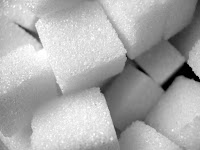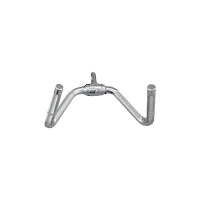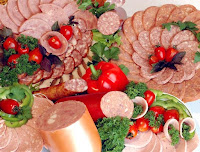There are many kids / children's multivitamins on the market and it's difficult to determine the
best kids vitamin.
IDLife Kids Nutrition is a high quality vitamin for
ages 2 and up. This review will show you how
IDLife is creating a standard that other companies are striving to meet.
IDLife has formulated a vitamin that covers antioxidant and anti-inflammatory properties, the basic nutrients for bone development, nervous system, cardio vascular development, but more important, brain (neurodevelopment, memory development) and vision (eye/retina development).
The safety of the product, the healthy levels of ingredients, the quality... nobody has a product like this on the market, it simply didn't exist until now. IDLife is creating a benchmark for other companies to try to achieve (and this applies to all of their product lines, not just IDLife Kids Nutrition). IDLife Kids Nutrition is
the leading vitamin for children, and I'm going to show you why, so let's dig into the details...
Background on IDLife Kids Nutrition and Competition
About 14 months ago IDLife starting looking at nutrition for kids. They looked at what was currently available from competitors and what science was available. Unfortunately, not many studies are out there, and what is available, has your standard recommendations between 11 to 18 minerals (think of the cartoon character that drives the stone car). They wanted to find out what was good out there and what they should include in their formula.
They were mortified by what was available. These other companies selling nutrition products for kids to caring parents to supplement diets from fast foods and non-nutritious foods... giving them a vitamin expecting all bases to be covered. These vitamins have labels promising health and vitality and it's just plain deceptive. Why? Most of those vitamins with the standard 11 nutrient formula have no minerals. There is one that has no B1, B2, or Vitamin K. Another had a moderate level of iron (which for children under 6 can have a danger of poisoning!). Many had no calcium or manganese
.
The "Bad Stuff"
Many kids vitamins contain artificial ingredients; chemical forms of sweeteners, synthetics, artificial flavoring, preservatives, and other additives - all of the "
bad things". Others have label paint, a lot of ingredients listed that impress people thinking that they have plenty of coverage. But when you look at the amounts, the levels of those ingredients, they do not meet what science indicates as being efficacious.. required by the body. They end up being sub-potent and do not meet the bodies requirements.
"Unlike most children’s vitamins
that contain artificial ingredients and fillers, IDLife Kids Nutrition
offers a formula that will ensure your child is getting the best
ingredients available with no artificial colors, flavors, sweeteners,
preservatives or additives. Boasting 24 vitamins and minerals, these
easy-to-chew tablets deliver all the necessary ingredients that your
child needs to fill their nutritional gaps with a great taste that will
have them begging for more." - IDLife
IDLife Kids Nutrition Ingredients
So what is IDLife's philosophy on a
good kids vitamin? I mentioned some of the bad stuff that may be in your kids vitamins. Or simply the lack of what should be included. Paul Sullivan, the Chief Formulator, for IDLife decided that the vitamin should include, what he calls, the three "A's" and two "P's".
The three A's.
- Anti-inflammatory
- Anti-neurotoxic
- Antioxidant (read about free radicals and oxidants here)
The two P's
- Pro brain development
- Pro eye development
Many focus on the A's, but everyone misses on the P's.
"Kids, like adults, are
deficient in certain vitamins and minerals due to a number of
contributing factors. To address these nutritional gaps, IDLife has
developed a fun and great tasting chewable packed with 24 vitamins and
minerals designed just for kids." - IDLife
Cofactors
IDLife included cofactors in their vitamins which many others lack. Cofactors are basically an insurance factor that helps with metabolism and absorption, cellular absorption as well; they are complimentary to the vitamins. And nobody else does it to the extent that IDLife does.
So, let's take a look at some of the ingredients (vitamins, minerals, and cofactors) that are in IDLife Kids Nutrition.
Methylfolate and Methylcobalamin
They mandated two ingredients, methylfolate and methylcobalamin. I've mentioned
folic acid and the associated dangers in a previous post, and many of you probably have heard of the MTHFR gene abnormality (having this marker hampers the process to properly absorb folic acid). Why is this important? Not a single kids vitamin has methylfolate and nobody has requested to use it, which is shocking. Both of these ingredients are so critical to overall health.
"Folate deficiency in the periconceptional period contributes to neural tube defects; deficits in vitamin B12
(cobalamin) have negative consequences on the developing brain during
infancy; and deficits of both vitamins are associated with a greater
risk of depression during adulthood." - Journal on the Effects of vitamin B12 and folate deficiency on brain development in children.
Methylfolate alone may help in clinical depression. Folate (B9) is an essential nutrient that is required for DNA
replication, it cannot be synthesized by the body, it can only be
obtained from diet or supplementation. Methycobalamin (Methyl B12) rescues neurons from cell death due to excess homocysteine (toxic to neurons). It has also been shown to help with Autism. There are many other benefits as well.
Choline
Choline is essential for the integrity and signaling functions of cell membranes. It's primarily for brain and memory development. Some prenatal vitamins even lack this critical nutrient, so the child is pretty much depleted of that nutrient right out of gate. It helps develop those neurotransmitters, the signaling pathways within membranes in the brain. It also helps methlyfolate to develop cells and
DNA in a healthy manner.
"Choline is critical during fetal development, when it influences stem cell proliferation and apoptosis, thereby altering brain and spinal cord structure and function and influencing risk for neural tube defects and lifelong memory function." - Journal - Choline: Critical Role During Fetal Development and Dietary Requirements in Adults
Inositol
Inositol works closely with Choline for nerve cell communication. And it can help fight depression in children as there is evidence that depressed kids have lower levels of inositol. Adults as well.
"A double-blind controlled trial of 12 g daily of inositol in 28 depressed patients for four weeks was performed. Significant overall benefit for inositol compared to placebo was found at week 4 on the Hamilton Depression Scale." - Controlled trials of inositol in psychiatry.
It's also beneficial for the eye membranes.
Lutein
There are few vitamins out there for kids that have ingredients to help the eyes. Lutein is essential to both the brain (helps improve neurons) and retina. They also have zeaxanthin and carotenoids listed in their ingredients. For a child's first 4 years these nutrients are important, eye development is very rapid in the first year. Long term cognitive performance, learning and memory all are impacted by these nutrients.
"Oral supplementation with the Age-Related Eye Disease Study (AREDS) formulation (antioxidant vitamins C and E, beta carotene, and zinc) has been shown to reduce the risk of progression to advanced age-related macular degeneration (AMD). Observational data suggest that increased dietary intake of lutein + zeaxanthin (carotenoids), omega-3 long-chain polyunsaturated fatty acids (docosahexaenoic acid [DHA] + eicosapentaenoic acid [EPA]), or both might further reduce this risk." - Age-Related Eye Disease Study 2 Research Group.
These are the basic nutrients for bone development, nervous system, cardio vascular. But more important, brain and vision. Before the child can even speak they use their vision to learn.
And it's not just for children. I take a zeaxanthin supplement (
EyePromise Restore) as I have a low MPOD (Macular Pigment Optical Density) score, which as seen above, can lead to macular degeneration when you are older.
Other Vitamins and Minerals
- Vitamin A deficiency can result in poor immune function. Infant impaired neural cognitive development is another result from a deficiency in Vitamin A. It promotes normal growth and development; tissue and bone repair; healthy skin (inside and out), eyes, and immune responses. It also helps protect against many forms of cancer.
- Zinc is used in over 200 enzymes in the body. It promotes a healthy nervous system and brain, especially in the fetus.
- Calcium for building strong bones, contracting muscles, teeth health, clots blood.
- Vitamin D helps maintain healthy and strong bones by retaining calcium.
- Vitamin K for metabolism pathways in tissue and bone. It can reduce neural damage and stop free radicals. Also controls blood-clotting.
- Vitamin E is an important antioxidant. It protects the cells from damage. It prevents blood clots, improves wound-healing, it's good for the skin, and helps against cancer.
- Vitamin B1 (aka thiamine) is essential for energy function and intellectual development (brain function). It helps the body make use of protein.
- Riboflavin (aka B2) is also used for energy (by converting fats, protein, sugars), healthy skin repair and maintenance, used for hair, nails, eyes. Also important to help protect against free radacals.
- Niacin (B3) helps lower cholesterol levels and balance blood sugar. Also helps with diarrhea.
- Pantothenic Acid (B5) controls fat metabolism, creates anti-stress hormones, helps with immunity.
- Vitamin B6 (Pyridoxine) has been shown to help with protein digestions, brain function, hormone production, help balance sex hormones (more useful in older individuals with PMS and menopause), used as a natural anti-depressant, and known to help with allergic reactions.
- Biotin (B7) is particularly important for children to prevent pain and fatigue in muscles, that ache from physical activity.
- Vitamin B12 is essential for energy, it helps to carry oxygen in your blood. Also helps with allergens and deals with toxins. It's also essential for the nerves.
- Ascorbic Acid (Vitamin C) - What doesn't this remarkable nutrient do? It's a very important antioxidant that strengthens the immune system. It fights pollutants, helps to protect the heart from disease, it protects against cancer, turns food into energy, helps making those anti-stress hormones, keeps joints, skin, and bones firm by making collagen.
- Selenium is another antioxidant that helps protect the body from free radicals. It can also reduce inflammation, fight infections, and helps the Vitamin E's processes.
- Manganese is important for the thyroid and calcium absorption. It helps cartilage formation, tissues, nerves, stabilizes blood sugars, promotes healthy RNA, and is important for insulin production.
Wait, No Iron?
You may have noticed there is no Iron. This was an executive decision by IDLife, and included many many long conversations. Why? Because under the age of 6 it’s a big danger. There should be a warning on vitamins that contain iron. Just imagine if you had an open bottle of delicious candy (to your 1 or 2 year old) laying around. They could ingest far too much and cause iron poisoning. If they are over 6, you can probably add iron. But IDLife decided against adding iron, especially since they wanted to create a vitamin for children as young as 2 (like my son in the picture at the beginning of this post). They did find safer versions of iron that could possibly work, but it's a risk they do not want to take.
Summary
With the risks we are seeing today, such as the
dangers from sugar (primarily fructose) and associated
cancer risks from processed meats, it's your duty as a parent to make sure your children are meeting their requirements to live long healthy lives. It can be difficult to determine if they are getting their required essential nutrients. It's more difficult to find a high quality product that doesn't contain artificial ingredients (colors, preservatives, additive, sweeteners).
The intentions and the way IDLife designed their kids nutrition product should tell you that it was a labor of love. The science behind it, which keeps changing, is solid (and they will reformulate as the science evolves). IDLife has created a product line that nobody else has, it simply didn't exist at this quality. It will help to develop your kids immune system, help protect them from everything they are exposed to, they'll be healthiest kids on the block.
FAQ
Q: When should my kids switch to IDLife Nutrition?
A: At the age of 12+ and 100 pounds healthy weight, once they have reached maturity.
Resources:
http://www.ncbi.nlm.nih.gov/pmc/articles/PMC3218540/
http://www.ncbi.nlm.nih.gov/pmc/articles/PMC3137939/
http://www.clinicaleducation.org/2011/11/01/methylfolate-and-methyl-b12-play-a-profound-role-in-health/
http://www.ncbi.nlm.nih.gov/pmc/articles/PMC2441939/
http://www.ncbi.nlm.nih.gov/pmc/articles/PMC3607807/
http://www.ncbi.nlm.nih.gov/pmc/articles/PMC3140638/
https://en.wikipedia.org/wiki/Inositol
http://www.ncbi.nlm.nih.gov/pubmed/9169302
Conference call with Paul Sullivan - October 2015












